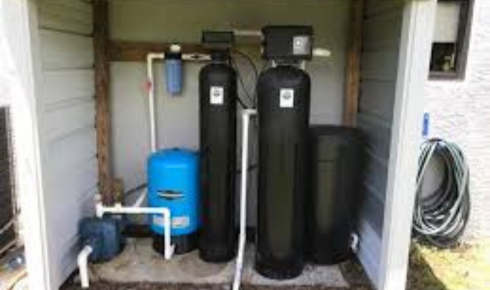There’s something deeply comforting about turning on a tap and knowing the water that flows out is clean, safe, and reliable. Yet, for many homeowners, that’s not always the case. Hard water stains, chlorine smells, or the faint metallic taste — they’re all signs that your home’s water might not be as pure as it looks. And the truth is, water quality can change more than most of us realize. That’s where a proper residential water treatment system steps in — quietly working behind the scenes to give you water you can trust, sip after sip.
The Everyday Impact of Unfiltered Water
We often take water for granted. It’s there when we shower, cook, clean, or brew that first morning coffee. But untreated or poorly filtered water can subtly affect everything in your daily routine. Think of dry skin that never seems to improve, or cloudy glassware straight from the dishwasher. Even the lifespan of your plumbing and appliances can take a hit because of mineral buildup and scale.
And while the visible issues are annoying enough, the invisible ones — like trace contaminants, sediments, and chlorine — can be far more concerning. Many municipal systems treat water for safety, but that doesn’t mean what reaches your faucet is pristine. Old pipes, long-distance water travel, or local mineral levels can easily change that equation.
That’s why many homeowners are rethinking how they handle water — shifting from “trusting the tap” to taking active control of what flows through it.
A Smarter Way to Protect Your Family and Home
Modern home water solutions aren’t just filters; they’re systems built around your specific needs. From water softeners that tackle hard water minerals like calcium and magnesium, to advanced filtration setups that reduce chlorine, PFAS, or heavy metals — the options today are smarter, more efficient, and often easier to maintain than ever before.
What’s interesting is how these systems are no longer just for large estates or high-end builds. Homeowners everywhere are realizing the long-term benefits of cleaner water: healthier skin, better-tasting meals, fewer plumbing repairs, and extended appliance life. In the grand scheme of things, installing a proper system often pays for itself.
A water treatment system, once seen as a luxury, is fast becoming a form of home insurance — one that protects both your health and your investment.
Understanding What’s in Your Water
Before you can fix a problem, you need to understand it. Water testing is the crucial first step most people overlook. Local water conditions vary wildly — even between neighborhoods. One home might have iron stains in the sink, another might deal with a sulfur smell from well water, and a third might notice white crusty deposits around fixtures.
A professional test or a reliable at-home kit can uncover what’s actually in your water. Once you know whether you’re facing hardness, chlorine, or microbial contaminants, it becomes far easier to select the right system for your home. It’s a little like going to the doctor — diagnosis first, treatment second.
The Evolution of Water Systems
Today’s water solutions for homes combine technology, efficiency, and sustainability in ways that would’ve seemed futuristic a decade ago. Smart systems can monitor usage, detect leaks, and even send you reminders for filter replacements via mobile apps. Some units regenerate only when needed, saving both salt and water.
Reverse osmosis (RO) filters are now compact and efficient enough to fit under most kitchen sinks. Whole-house carbon systems handle chlorine and VOCs, ensuring your water smells fresh from every tap. And for homes with well water, UV sterilization systems add another layer of protection against bacteria — without using chemicals.
The technology has caught up with the modern homeowner’s lifestyle: convenient, intelligent, and quietly dependable.
The Emotional Side of Clean Water
Here’s something people don’t often mention — there’s a psychological comfort that comes from knowing your water is pure. You notice it in little ways: how your coffee tastes richer, your shower feels softer, your clothes come out cleaner. There’s peace in not having to second-guess what your family’s drinking or cooking with.
It’s a form of self-care that extends beyond utility. Water is personal — it touches every part of your life, literally. Investing in a treatment system isn’t just about safety or savings; it’s about creating an environment where you can breathe easier, live healthier, and feel more at home.
The Cost of Doing Nothing
People sometimes hesitate to install a water system, thinking it’s an unnecessary expense. But the silent costs add up quickly — clogged pipes, shortened water heater life, worn-out fixtures, dull laundry, and increased soap usage. Add to that the hidden toll of potential contaminants or the constant buying of bottled water, and you begin to see how “doing nothing” often costs more in the long run.
Even small steps, like adding a carbon filter to your main line or using a softener in hard-water zones, can make a world of difference.
Bringing It All Together
Water is simple, but managing it well takes intention. A proper system doesn’t have to be complicated — it just needs to fit your home’s specific needs. Whether you live in a city apartment or a rural farmhouse, the right combination of filtration, softening, and purification can turn your water from ordinary to exceptional.
The best part? Once it’s installed, you barely have to think about it. You’ll just feel the difference — every day, in every drop.
The Bottom Line
Your home deserves water that’s as pure as the life you’re building inside it. Reliable filtration isn’t a trend; it’s a quiet revolution in how we view everyday health and comfort. If you’ve ever doubted whether your tap water is as clean as it could be, now’s the time to find out.
Because clean water isn’t a luxury — it’s the foundation of a healthier, happier home.

